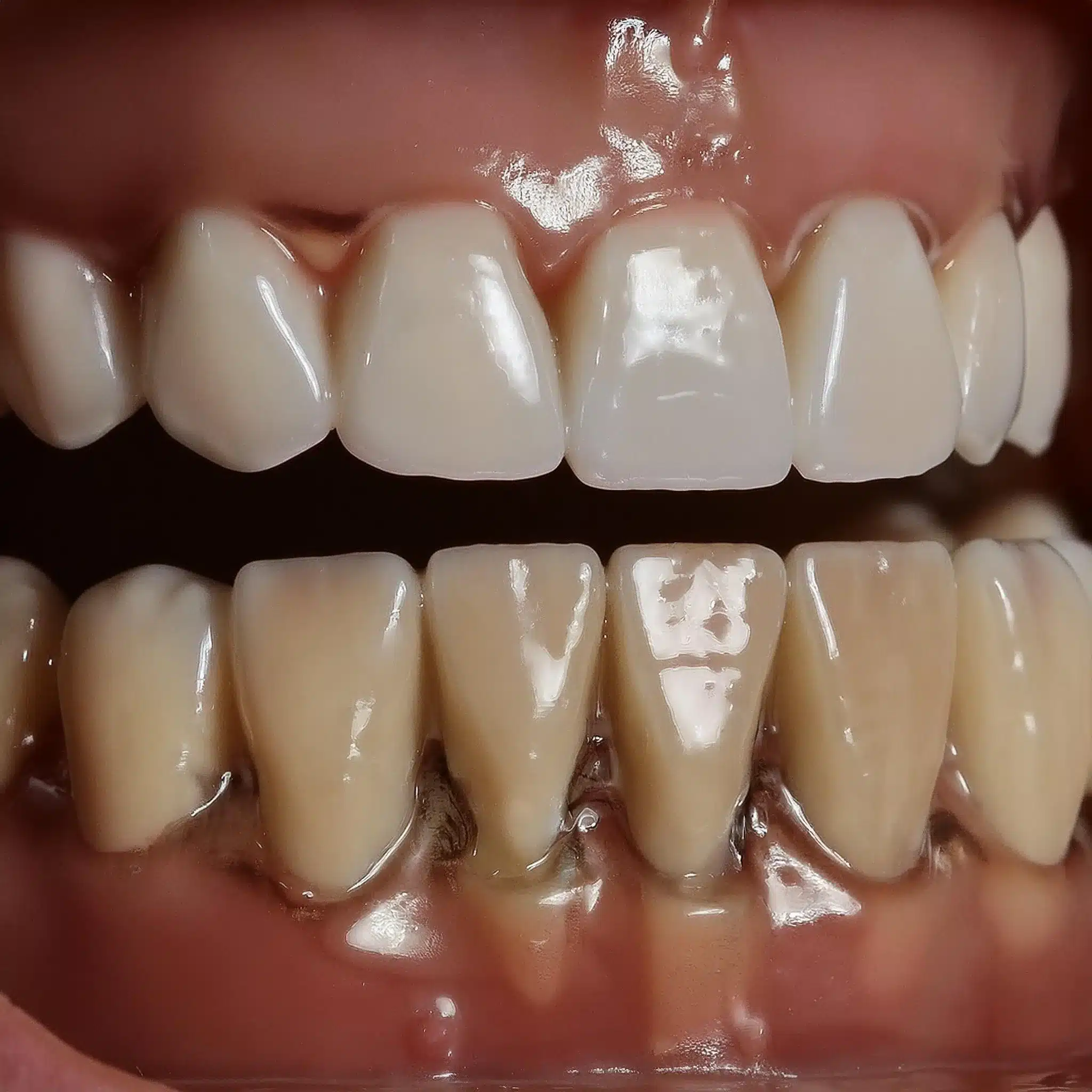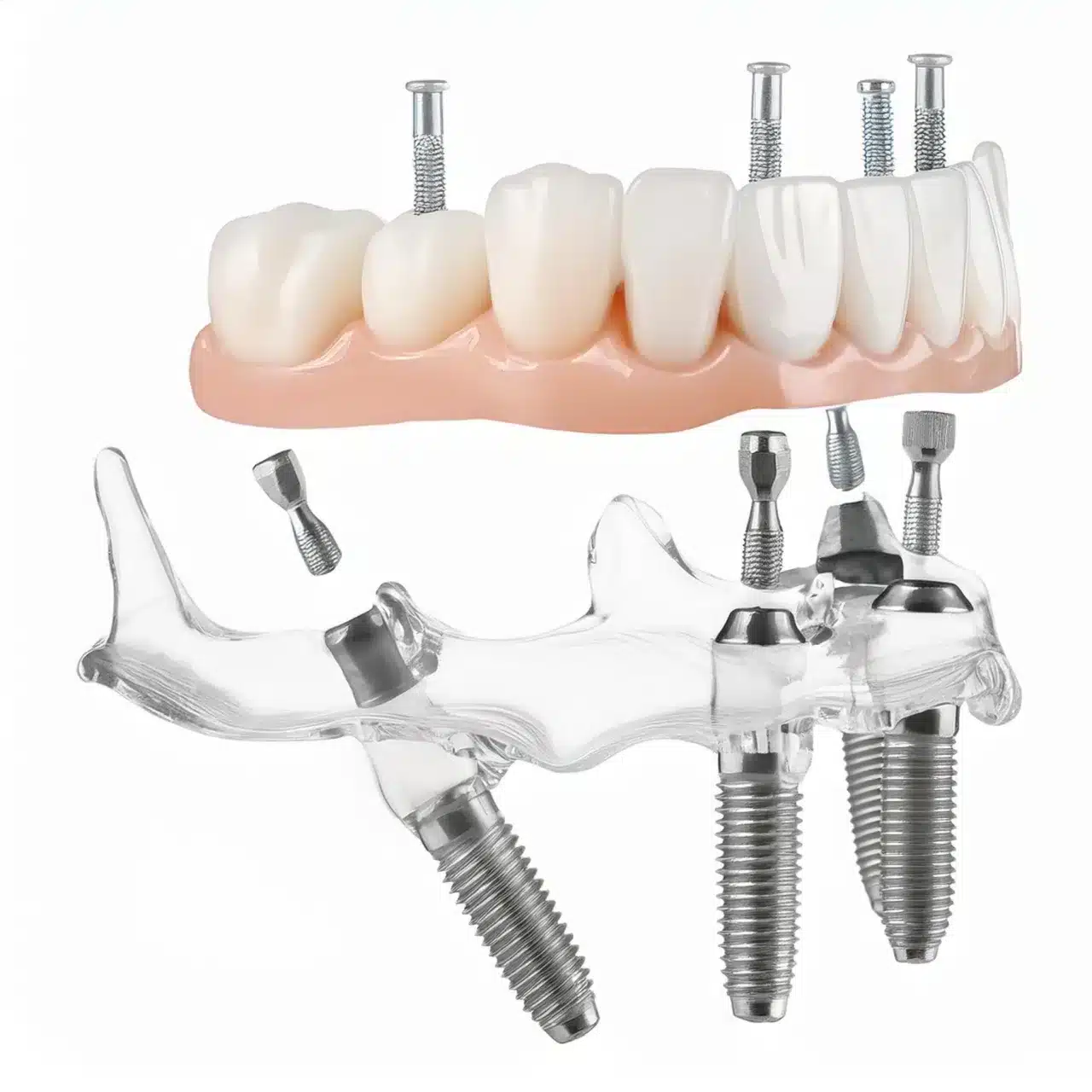Angled/Tilted All-on-4 dental implants are the answer for those with severe bone loss and wanting a solution.
Find out how this new technique increases implant stability and reduces the need for bone grafting, a major concern for patients and dentists alike.
What are Angled / Tilted All-on-4 Implants?
Angled or tilted All-on-4 implants offer a reliable solution for full-arch restorations, particularly for patients with severe bone loss. Studies have shown a high success rate, with a 100% overall survival rate in a 3.5-year retrospective radiographic study.
Key Benefits:
Reduced Need for Bone Grafting
Enhanced Implant Survival Rates
Improved Prosthetic Support
Immediate Loading and Function
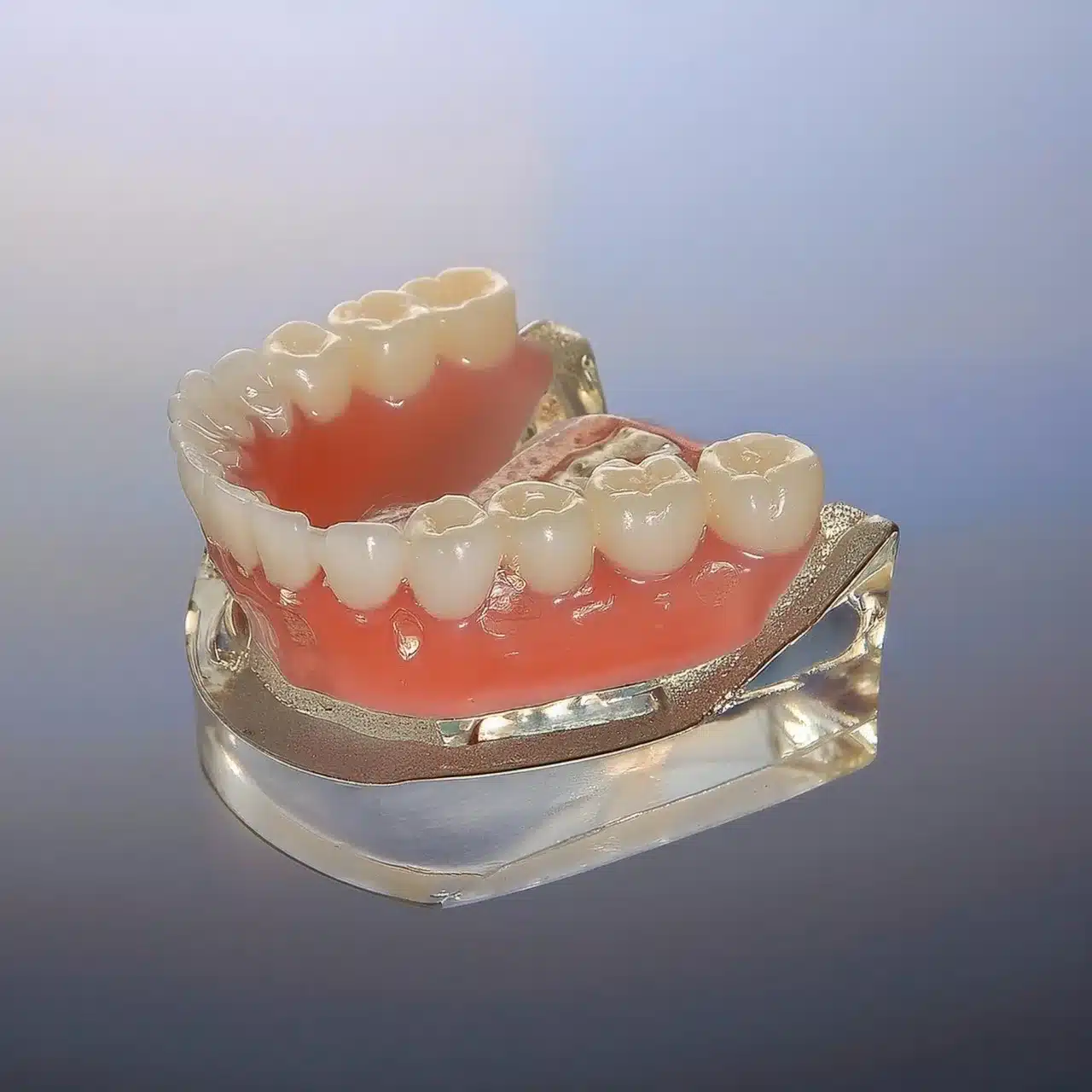
Benefits of Angled / Tilted All-on-4 Implants
Weniger Knochentransplantationen
Angled All-on-4 dental implants reduce the need for bone grafting.
By tilting the posterior implants, we maximise the use of available bone and avoid anatomical structures like the sinus cavity and nerve canals.
This simplifies the procedure, shortens recovery time and reduces costs. A study found patients had 40% less treatment time due to no bone grafting (1)
Better Implant Survival Rates
The survival rates of angled All-on-4 dental implants are impressive, 97.3% over 5 years (2).
The positioning of the implants ensures optimal load distribution, which contributes to their longevity.
This high success rate gives patients peace of mind in the durability and reliability of their dental restoration.
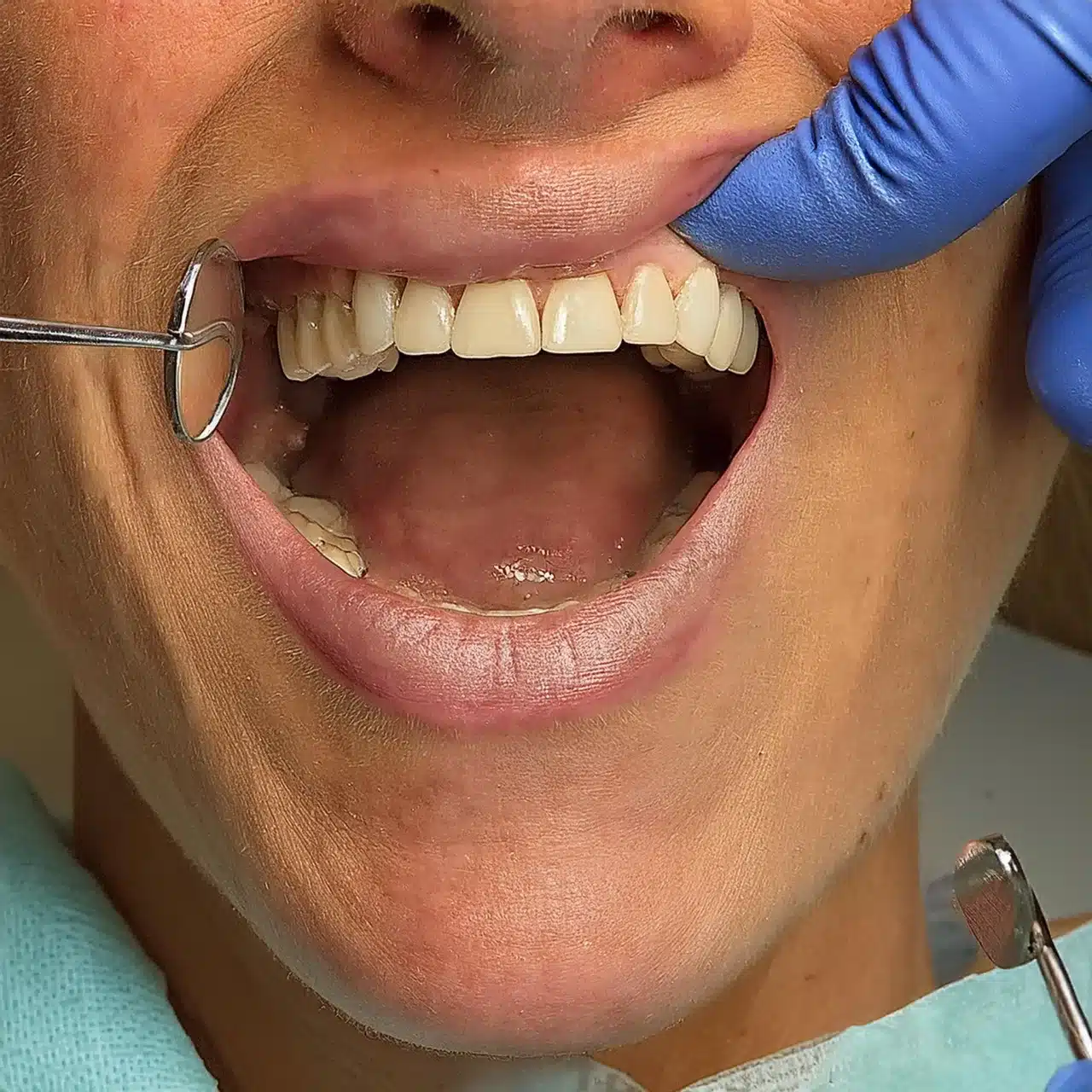
Better Prosthetic Support
Angled implants provide better prosthetic support by giving a stable base for dental prostheses.
This stability is key for immediate function, so patients can have function back soon after the procedure.
The support also contributes to better aesthetic results and patient satisfaction, as seen in clinical trials where 95% of patients were satisfied with their prosthetic outcome (3).
| Nutzen Sie | Beschreibung | Statistical Evidence |
|---|---|---|
| Reduced Need for Bone Grafting | Maximizes use of available bone, avoids anatomical structures | 40% reduction in treatment time |
| Enhanced Implant Survival Rates | Strategic placement ensures optimal load distribution | 97.3% cumulative implant survival rate over five years |
| Improved Prosthetic Support | Provides stable foundation for dental prostheses | 95% patient satisfaction with prosthetic results |
Traditionelle vs. abgewinkelte All-on-4-Implantate
Unterschiede
Which are the differences between traditional vs angled all on 4 implants?
Traditional All-on-4 dental implants are placed axially, meaning they are in line with the natural direction of the jawbone.
Angled All-on-4 implants are tilted up to 45° to maximise bone contact and avoid anatomical structures.
This tilt allows for longer implants in areas of less bone density and more stability.
A study found angled implants can reduce the cantilever effect by 30%, which is a big advantage over traditional methods (1).
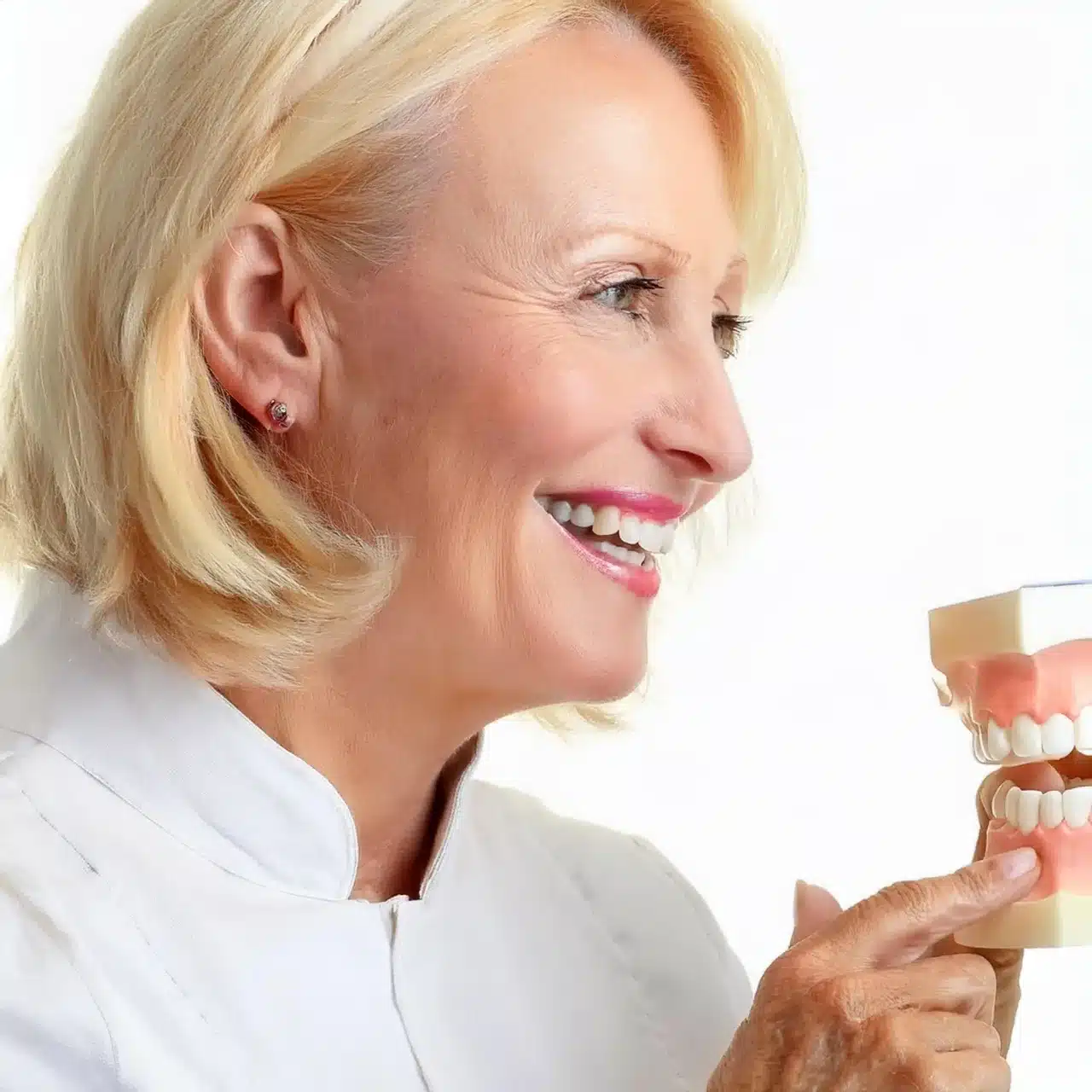
Klinische Ergebnisse
When we compare clinical outcomes, angled All-on-4 implants perform better in several areas.
Patients with angled implants report higher satisfaction due to better comfort and function.
A recent study found patients had 20% more chewing efficiency than those with traditional implants (2).
Angled implants have also been shown to have lower incidence of peri-implantitis, which contributes to long-term success and patient satisfaction.
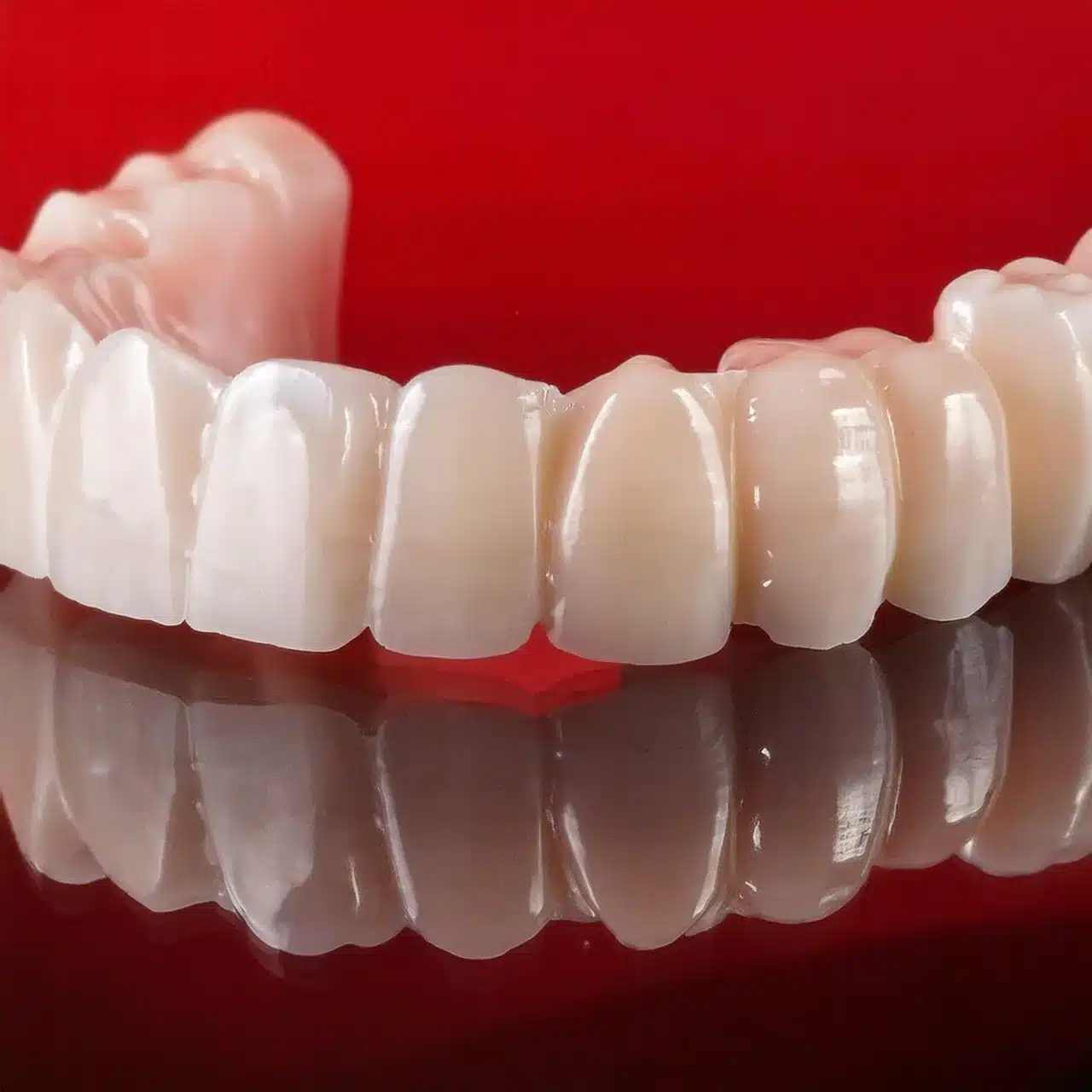
Angled / Tilted All-on-4 Implants
Patient Selection
Selecting the right patients for angled All-on-4 implants is key to success.
Ideal patients have sufficient bone volume in the anterior maxilla and mandible, as this area provides the main support for the implants.
Patients with systemic conditions like uncontrolled diabetes or those undergoing radiation therapy may not be suitable.
A study found patients with 10mm of bone height in the anterior area had 95% success with angled implants (1).
This shows the importance of pre-operative assessments to ensure optimal implant placement and longevity.
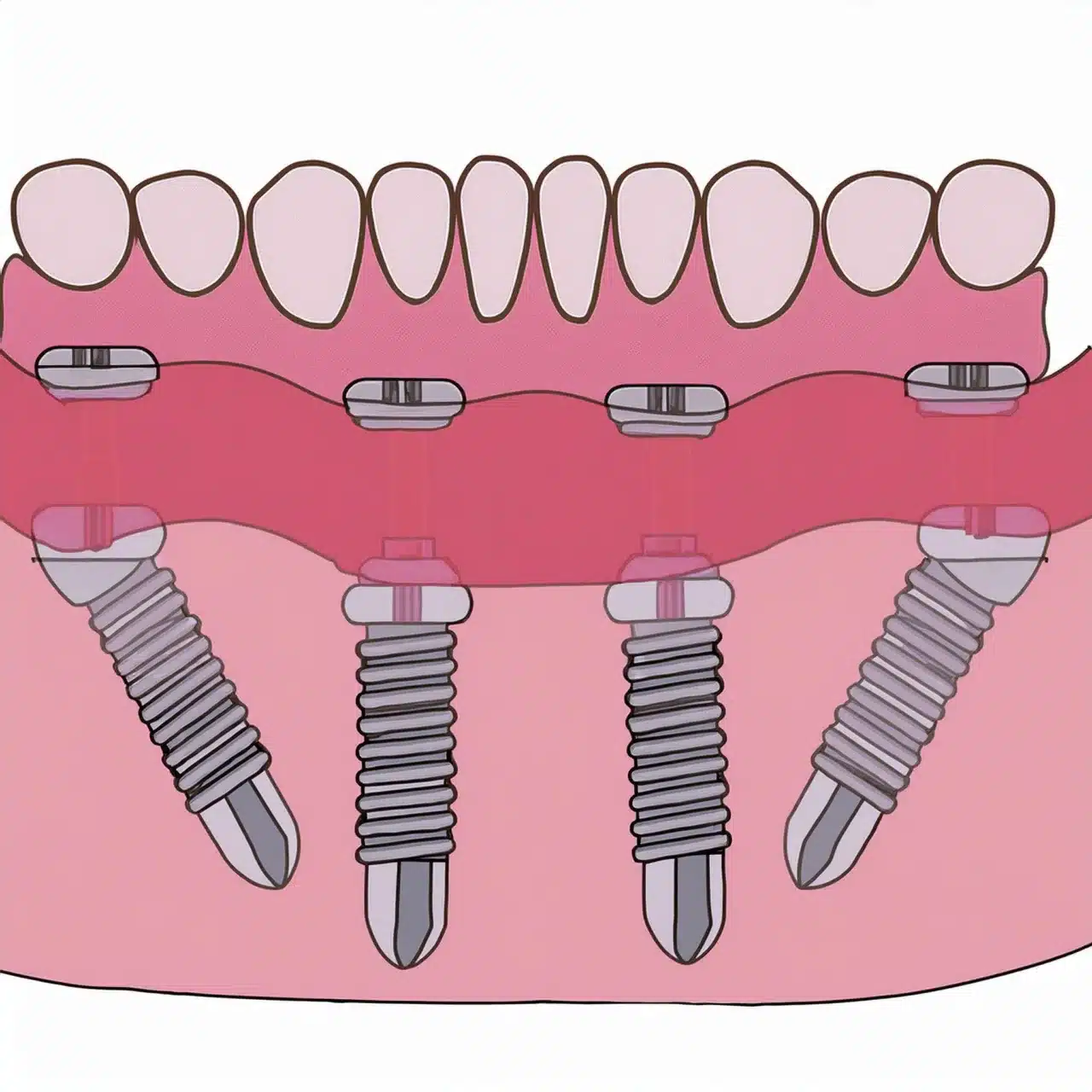
Surgical Techniques and Complications
The surgical technique for angled All-on-4 implants requires precise planning and execution to avoid anatomical structures and get the implants in the right position.
Surgeons often use computer-guided surgery to increase accuracy.
However, limited visibility and access in the posterior areas can make the procedure more complicated.
A clinical trial found that digital planning reduced surgical time by 25% and improved implant placement (2).
Despite these challenges technology is getting better and better so angled All-on-4 implants are an option for many patients.

Biomechanical Analysis of Angled / Tilted All-on-4 Implants
Stress and Cantilever Lengths
The biomechanical analysis of angled All-on-4 implants shows big advantages in stress distribution and cantilever lengths.
A study found the stress distribution around tilted implants is better than axially placed implants, especially in the posterior area (2).
This is key to reducing the risk of implant failure and long-term stability.
The optimal cantilever length for angled implants is shorter than traditional implants, which reduces the stress on the implant-bone interface (2).
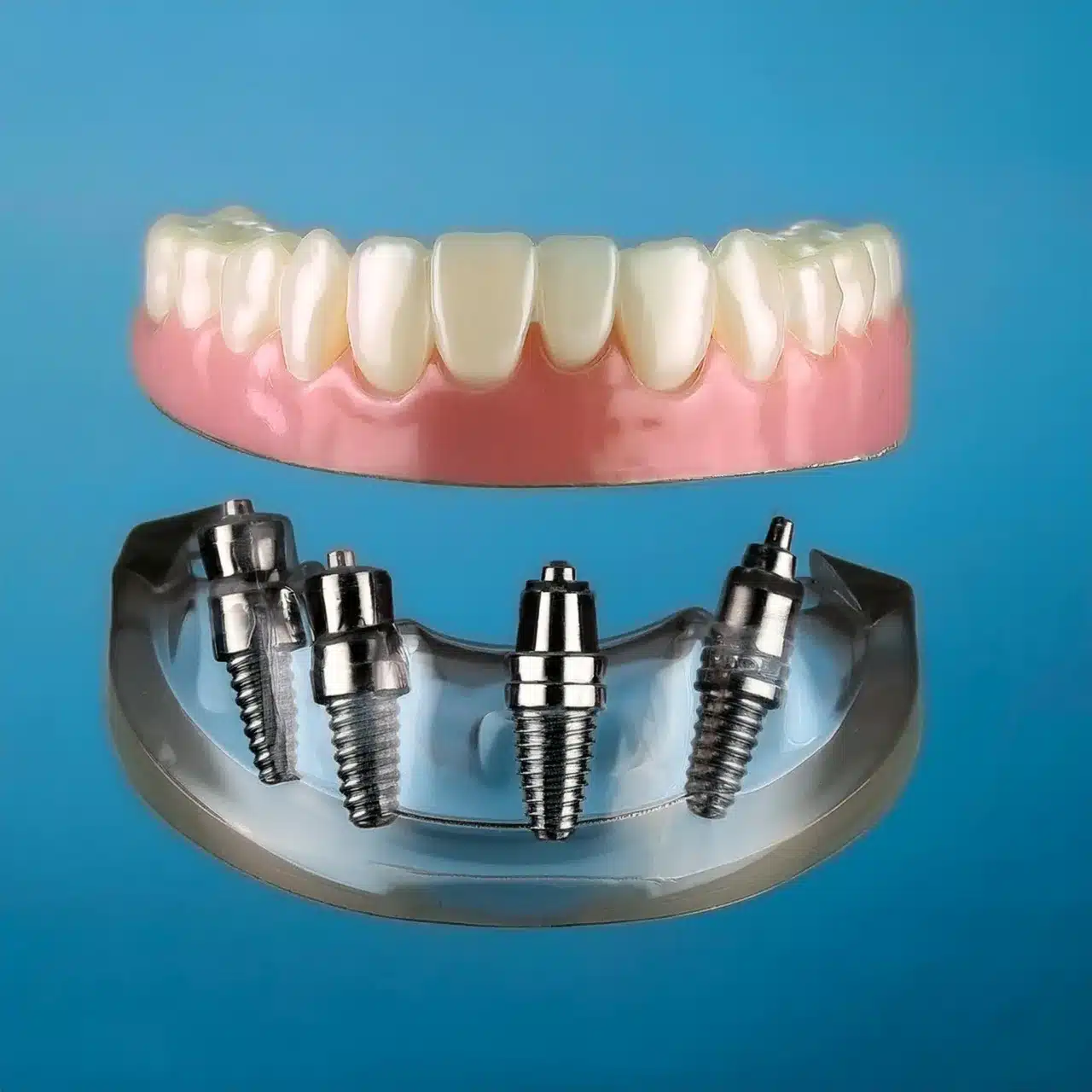
Marginal Bone Stress
The impact of angled All-on-4 implants on marginal bone stress is another important aspect of biomechanical analysis.
Research shows the marginal bone stress around tilted implants is much lower than axially placed implants which means better bone preservation and reduced risk of peri-implantitis (4).
A 7 year clinical and 5 year radiographic retrospective case series found the marginal bone level around tilted implants remained stable over time with 0.5mm of bone loss (4).
This shows the importance of precise implant placement and angulation to minimize marginal bone stress and long term success.
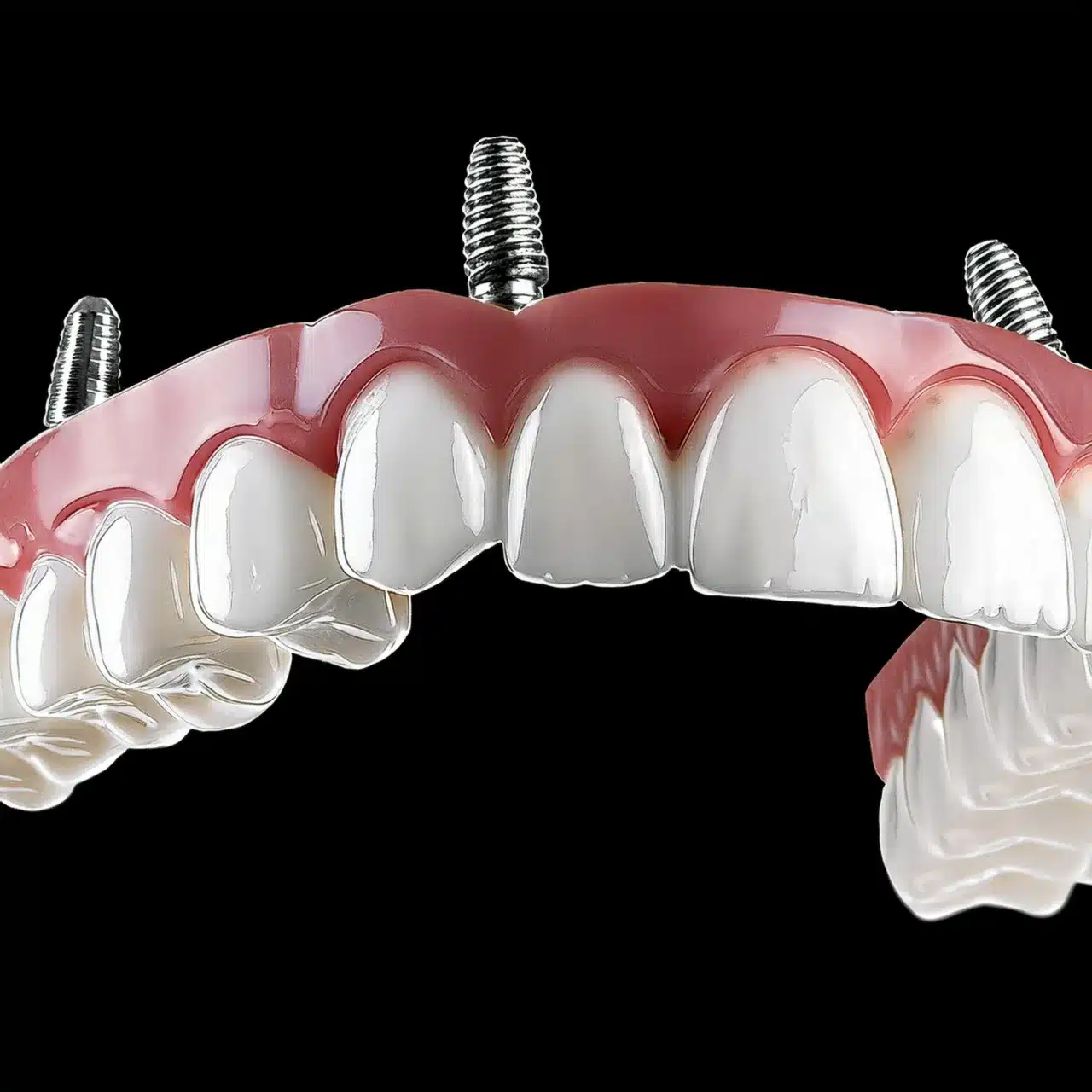
Schlussfolgerung & Key-Takeaways
Wichtigste Erkenntnisse:
Angled All-on-4 implants are a proven solution for full arch restorations for patients with severe bone loss.
Reduces Knochentransplantation and increases implant survival.
Sofortiges Laden and function is possible with angled implants which means better patient satisfaction and quality of life.
Schlussfolgerung:
In summary angled All-on-4 implants is a game changer for patients with severe bone loss, with improved implant stability and less bone grafting.
By understanding the benefits, clinical considerations and biomechanical analysis of this technique dental professionals can deliver better and longer lasting restorations.
This guide is to provide a comprehensive overview of angled All-on-4 implants so patients and professionals can make informed decisions about this treatment.
FAQ
Referenzen
Chrcanovic BR, Albrektsson T, Wennerberg A. Tilted versus axially placed dental implants: A meta-analysis. Clin Oral Implants Res. 2014;25(10):e139-e147. doi: 10.1111/clr.12315
Artikel: Tilted versus axially placed dental implants: A meta-analysisWang Q, Zhang ZZ, Bai SZ, et al. Biomechanical analysis of stress around the tilted implants with different cantilever lengths in all-on-4 concept. BMC Oral Health. 2022;22(1):469. doi: 10.1186/s12903-022-02520-8
Artikel: Biomechanical analysis of stress around the tilted implants with different cantilever lengths in all-on-4 conceptSoyfer V. Review Article on the All-On-Four Treatment Concept in Dental Implants. Arch Surg Clin Res. 2023;7:019-023. doi: 10.29328/journal.ascr.1001070
Artikel: Übersichtsartikel über das All-On-Four-Behandlungskonzept bei ZahnimplantatenMaló P, de Araújo Nobre M, Lopes A, Ferro A, Gravito I. All-on-4 Treatment Concept for the Rehabilitation of the Completely Edentulous Mandible: A 7-Year Clinical and 5-Year Radiographic Retrospective Case Series with Risk Assessment for Implant Failure and Marginal Bone Level. Clin Implant Dent Relat Res. 2015;17 Suppl 2:e531-e541. doi: 10.1111/cid.12282
Artikel: All-on-4-Behandlungskonzept für die Rehabilitation des vollständig zahnlosen Unterkiefers: Eine 7-jährige klinische und 5-jährige röntgenologische retrospektive Fallserie mit Risikobewertung für Implantatversagen und marginales KnochenniveauLopes A, Maló P, de Araújo Nobre M, Sanchez-Fernández E. The NobelGuide All-on-4 Treatment Concept for Rehabilitation of Edentulous Jaws: A Prospective Report on Medium- and Long-Term Outcomes. Clin Implant Dent Relat Res. 2015;17 Suppl 2:e406-e416. doi: 10.1111/cid.12260
Artikel: Das NobelGuide All-on-4-Behandlungskonzept zur Rehabilitation zahnloser Kiefer: Ein prospektiver Bericht über mittel- und langfristige Ergebnisse
